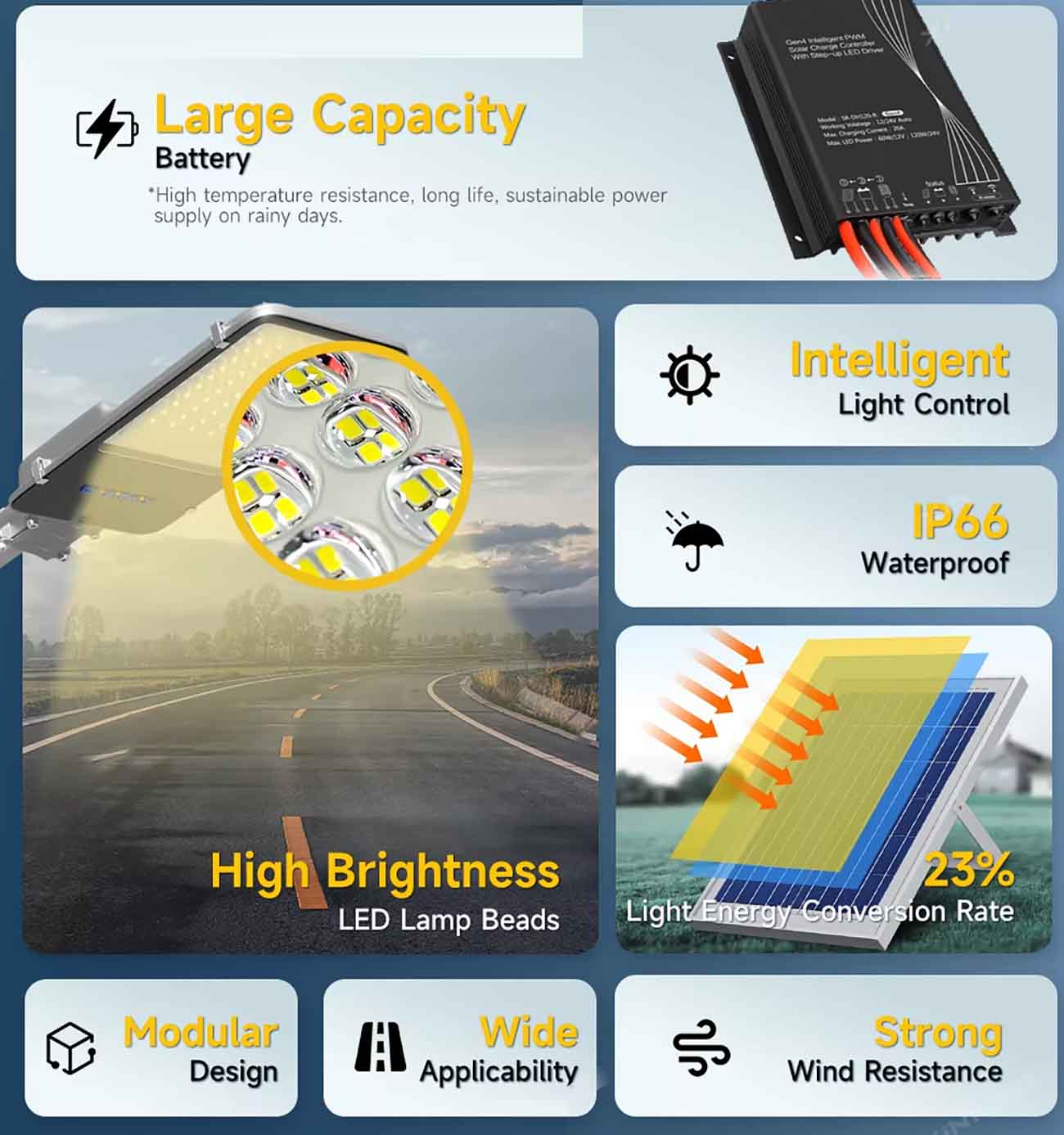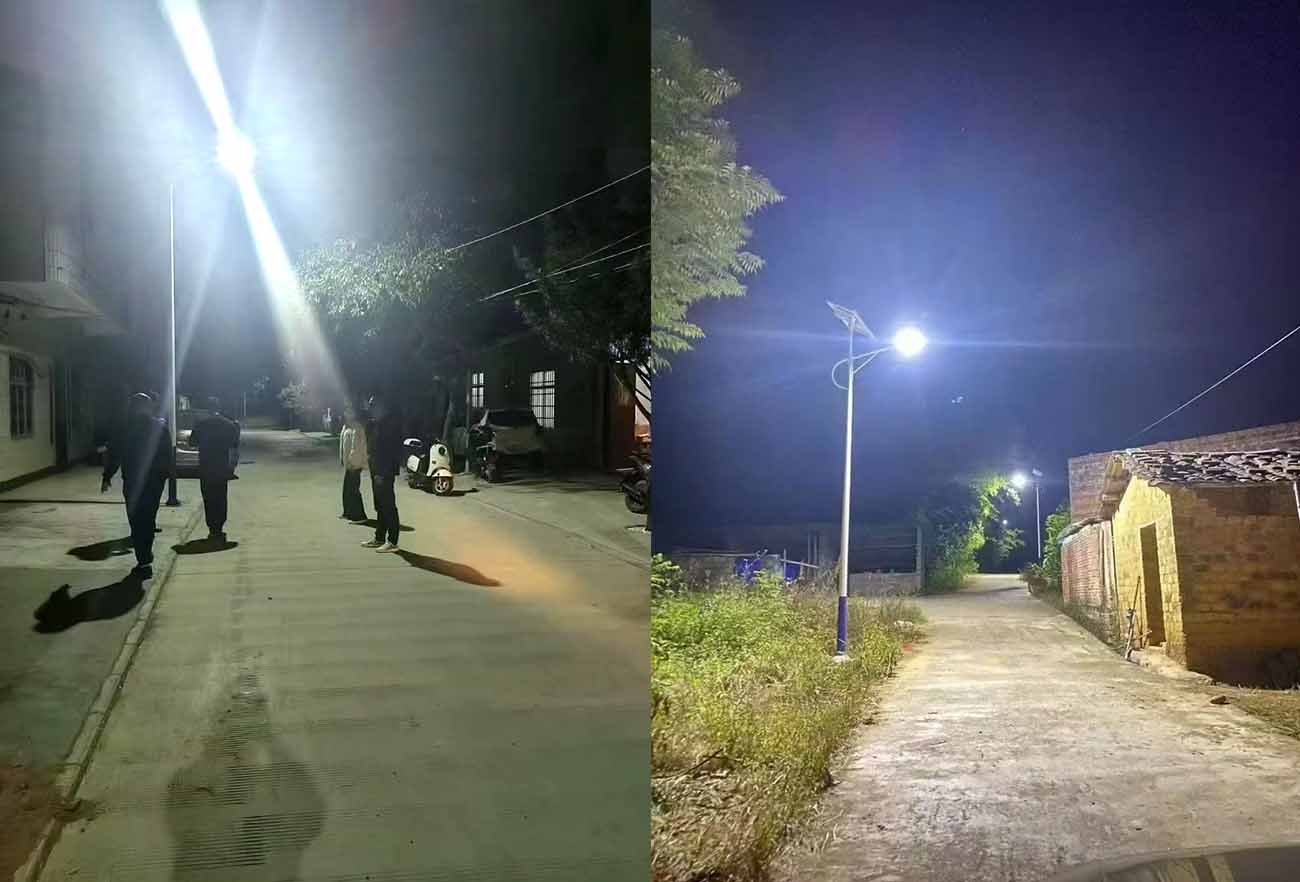Lampe de route LED étanche IP65, haute luminosité, économie d'énergie, éclairage extérieur en aluminium moulé sous pression Lampadaire à LED
La durée de vie de la batterie d'un lampadaire solaire extérieur étanche varie généralement de 3 à 8 ans, la durée exacte dépendant du type de batterie, des conditions d'utilisation et de l'entretien.
Facteurs clés affectant la durée de vie de la batterie
Type de batterie : Il s’agit du facteur le plus critique.
- Batteries lithium-ion (par exemple, LiFePO₄) : le type le plus courant dans les lampadaires solaires modernes, avec une durée de vie de 5 à 8 ans et plus de 2 000 cycles de charge-décharge. Elles offrent une excellente performance à des températures extrêmes (de -20 °C à 60 °C) et présentent une faible autodécharge.
- Batteries plomb-acide (p. ex., gel, AGM) : Technologie plus ancienne avec une durée de vie plus courte, de 3 à 5 ans et environ 500 à 1 000 cycles. Elles sont plus volumineuses, plus sensibles aux températures élevées et basses et nécessitent un entretien occasionnel (p. ex., vérification de l'électrolyte pour les batteries non scellées).
Conditions d'utilisation et environnementales :
- Température : Une chaleur extrême (supérieure à 40 °C) accélère le vieillissement de la batterie, tandis qu'un froid extrême (inférieur à -10 °C) réduit temporairement sa capacité. Les conceptions étanches protègent de la pluie, mais pas des dommages thermiques.
- Cycles de charge-décharge : Les décharges profondes fréquentes (par exemple, utiliser plus de 80 % de la capacité de la batterie chaque nuit) réduisent sa durée de vie. Des contrôleurs intelligents limitant les décharges profondes (à 50-70 %) prolongent la durée de vie de la batterie.
- Disponibilité de la lumière solaire : un ensoleillement insuffisant (par exemple, de longues saisons des pluies, des zones ombragées) entraîne une charge incomplète, ce qui provoque une « sulfatation » dans les batteries plomb-acide ou des dommages irréversibles aux batteries lithium-ion au fil du temps.
Contrôleur et maintenance :
- Un contrôleur de charge-décharge de qualité empêche la surcharge (qui surchauffe les batteries) et la décharge excessive (qui sollicite les cellules de la batterie), ajoutant ainsi 1 à 2 ans à la durée de vie.
- Un entretien régulier (par exemple, le nettoyage des bornes de la batterie, la vérification de l'intégrité des joints d'étanchéité) évite la corrosion ou les dégâts des eaux, en particulier pour les batteries au plomb-acide.

Conseils pour prolonger la durée de vie de la batterie
- Choisissez des lampadaires solaires avec des batteries lithium-ion (LiFePO₄) pour une durabilité plus longue, en particulier dans les climats difficiles.
- Assurez-vous que le panneau solaire est installé dans un endroit avec plus de 6 heures de soleil direct par jour pour éviter une charge incomplète.
- Sélectionnez des produits dotés d'un contrôleur intelligent doté d'une protection contre les surcharges/décharges excessives et d'une compensation de température.



